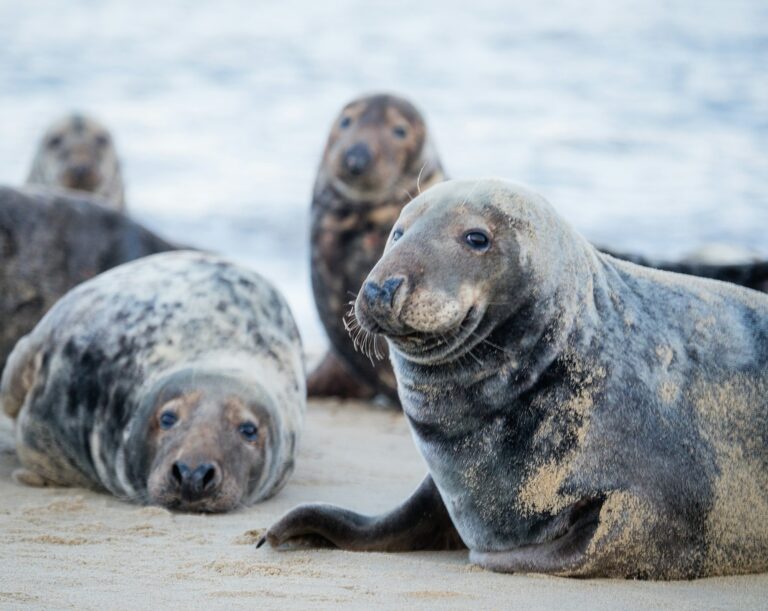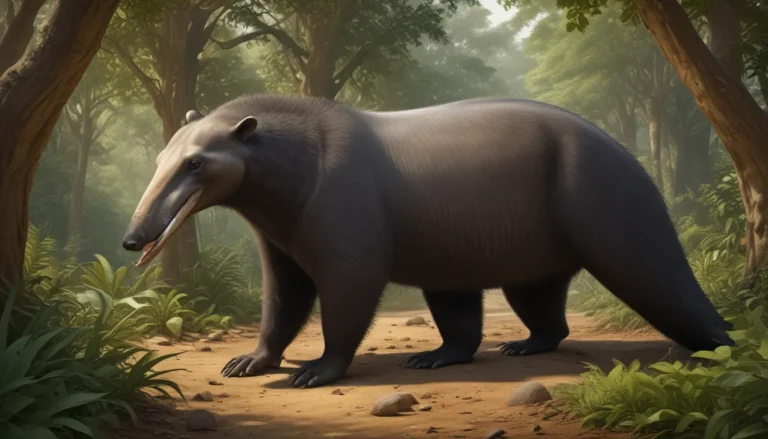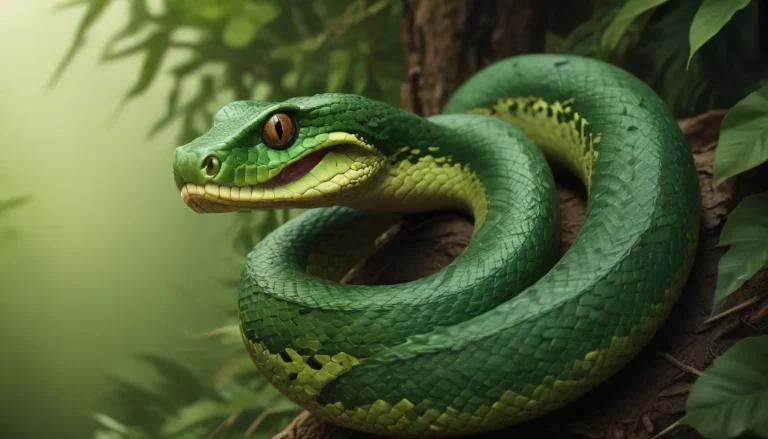The pictures we use in our articles might not show exactly what the words say. We choose these pictures to make you interested in reading more. The pictures work together with the words but don’t take their place. The words still tell you the important facts.
Have you ever found yourself curious about the mysteries hidden within the depths of the Amazon River? Amidst the vast array of creatures that call this iconic river home, one stands out for its striking color and playful demeanor—the pink river dolphin. These enchanting beings are not merely a splash of pink in the murky waters; they are a testament to the wonders of nature. What sets these dolphins apart, and why are they pink, you ask? Well, their unique coloration is just the beginning of their captivating characteristics. From their remarkable intelligence to their solitary tendencies, pink river dolphins are full of surprises waiting to be discovered. Are you ready to embark on a journey where reality meets myth? Let's delve into the enthralling world of these captivating inhabitants of the Amazon.
Unveiling the Uniqueness of Pink River Dolphins
Pink river dolphins, also known as boto dolphins, are found dwelling in the freshwater rivers of the Amazon and Orinoco basins in South America. Their distinct color and habitat differentiate them from other dolphin species, making them truly one-of-a-kind. Here's what makes these dolphins so unique:
- Color Transformation: Pink river dolphins possess the remarkable ability to change their color from gray to pink as they mature. Various factors such as water temperature, sunlight exposure, and emotional states can influence the intensity of their pink hue.
- Flexibility: These dolphins exhibit exceptionally flexible necks, a feature uncommon in dolphin species. This flexibility enables them to navigate through the dense forests and tight spaces of flooded rivers with ease.
- Large Brains: Pink river dolphins boast large brains, with a brain-to-body weight ratio surpassed only by humans. This indicates their high intelligence and complex social behaviors.
Habitat and Lifestyle of Pink River Dolphins
The lives of pink river dolphins in the rivers of South America are nothing short of fascinating. Understanding their habitat and lifestyle provides valuable insights into their survival strategies and behaviors.
- Freshwater Dwellers: Pink river dolphins are among the few dolphin species that reside in freshwater habitats, specifically within the Amazon and Orinoco river basins.
- Solitary Creatures: In contrast to their oceanic relatives, pink river dolphins are primarily solitary creatures. They tend to only come together for mating purposes or in areas abundant with food.
- Diet: Their diet is diverse, encompassing a range of food sources such as fish, crabs, and even small turtles, showcasing their adaptability to the river environment.
Recognizing Threats to Their Survival
Despite their adaptability, pink river dolphins face several threats that endanger their population and habitat.
- Habitat Destruction: Deforestation and the construction of dams disrupt the natural habitat of pink river dolphins, posing challenges to their survival.
- Pollution: Water pollution resulting from agricultural runoff and industrial waste presents a significant threat to their health and the ecosystem they rely on.
- Accidental Capture: Pink river dolphins often fall victim to accidental capture in fishing nets, leading to injuries or fatalities, a phenomenon known as bycatch.
Conservation Efforts for Pink River Dolphins
Efforts aimed at protecting and conserving pink river dolphins are crucial for their survival and the overall health of their ecosystem.
- Establishing Protected Areas: Creating protected areas within their habitat helps safeguard pink river dolphins from human encroachment and supports the preservation of regional biodiversity.
- Research and Monitoring: Ongoing research and monitoring activities by scientists aid in understanding the behavior, population dynamics, and threats faced by pink river dolphins, informing effective conservation strategies.
- Community Engagement: Involving local communities in conservation efforts plays a vital role in reducing threats like pollution and bycatch, fostering harmonious coexistence with these magnificent creatures.
Behaviors and Social Structures of Pink River Dolphins
Pink river dolphins exhibit intriguing behaviors and social structures that reflect their intelligence and adaptability in their unique environment.
- Tool Use: These dolphins have been observed using tools, such as branches, to corral fish, demonstrating their problem-solving skills.
- Social Interactions: While primarily solitary, pink river dolphins engage in complex social interactions during mating season or in areas abundant with food, involving vocalizations and physical gestures.
- Parental Care: Mothers display attentiveness to their calves, teaching them essential survival skills and maintaining close bonds with them for several years.
Cultural Significance of Pink River Dolphins
In the cultures of the Amazon basin, pink river dolphins hold a special place, surrounded by myths and profound respect.
- Mythological Creatures: Many indigenous cultures view pink river dolphins as magical beings capable of transforming into humans to interact with local communities.
- Legends of Protection: Legends often depict pink river dolphins as protectors of the Amazon, contributing to their revered status and protection by local populations.
Recent Discoveries and Ongoing Research
Continual studies and observations shed light on new findings about the fascinating world of pink river dolphins.
- New Behaviors: Scientists have documented novel behaviors among pink river dolphins, such as complex play and social interactions, enriching our understanding of their social lives.
- Genetic Studies: Ongoing genetic research provides insights into their evolution, population genetics, and the impacts of environmental changes on their species.
Pink river dolphins continue to captivate scientists and conservationists with their distinct characteristics and behaviors. Their survival is intricately linked to the health of the Amazon and Orinoco rivers, emphasizing the critical importance of conservation efforts to protect these vital ecosystems and their inhabitants.
Embracing the Marvel of Pink River Dolphins
Exploring the enchanting world of pink river dolphins has been an eye-opening journey filled with wonder and discovery. These remarkable creatures, with their captivating coloration and extraordinary intelligence, serve as a testament to the beauty of nature. They are not merely inhabitants of the rivers they grace with their presence; they are integral to the delicate balance of river life. Through their social behavior and feeding habits, we catch a glimpse of the intricate complexity of aquatic ecosystems. As we immerse ourselves in their world, it becomes evident that safeguarding these magnificent mammals is paramount to preserving biodiversity. The existence of pink river dolphins urges us to appreciate the marvels of the natural world and take proactive steps to ensure their thriving future. Let's unite in our efforts to maintain the cleanliness and safety of our rivers, securing a tomorrow where pink river dolphins continue to flourish.
Frequently Asked Questions
Q: Can pink river dolphins really change color?
A: Yes, indeed! Pink river dolphins, also known as boto dolphins, undergo a captivating color transformation as they age. Young dolphins start off as dark gray, but as they mature, their skin transitions to a vibrant pink hue. This change can be influenced by various factors, including their activity level, exposure to sunlight, and emotional state.
Q: How large do pink river dolphins grow?
A: Pink river dolphins are true giants of the river, with adult individuals reaching lengths of up to 8 feet. To put it into perspective, that's roughly the length of a family sofa! Additionally, these dolphins can weigh up to 400 pounds, showcasing their substantial size.
Q: Where can one find these unique dolphins?
A: Pink river dolphins call the freshwater rivers of the Amazon and Orinoco basins in South America their home. Social and adaptable creatures, they can be spotted in flooded forests during the wet season or traversing the main rivers, lakes, and near the mouths of small tributaries.
Q: Are pink river dolphins endangered?
A: Unfortunately, yes. These magnificent creatures face threats stemming from habitat destruction, pollution, and accidental entanglement in fishing nets. While their current IUCN status is listed as "Data Deficient," signifying a lack of adequate information for assessment, conservation endeavors are vital for ensuring their continued existence.
Q: What does the diet of pink river dolphins consist of?
A: Pink river dolphins exhibit a diverse palate, feasting on an assortment of fish, crabs, and even small turtles. Their varied diet reflects their adaptability, with unfused neck vertebrae allowing them to rotate their heads 180 degrees to capture prey in tight spaces.
Q: How do pink river dolphins communicate?
A: Communication among pink river dolphins involves a combination of whistles, clicks, and body language. They utilize sound for echolocation, aiding in navigation and hunting within the murky waters of their river habitats. Furthermore, their body movements and postures serve as signals to convey intentions and emotions to fellow dolphins.
Q: Is it possible for people to swim with pink river dolphins?
A: While swimming with pink river dolphins in their natural habitat is not widely encouraged due to the importance of respecting their environment and minimizing human impact, there are controlled settings in South America where guided interactions are offered. These interactions prioritize the well-being of the dolphins and provide participants with an unforgettable experience while maintaining a harmonious relationship with these marvelous creatures.
Your Contribution Matters
Our dedication to delivering trustworthy and engaging content is at the core of our philosophy. Each valuable insight on our platform is contributed by users like you, enriching our database with diverse perspectives and knowledge. To ensure the highest standards of accuracy and reliability, our team of editors rigorously scrutinizes every submission. Rest assured that the facts we share are not only fascinating but also backed by credibility. Trust in our unwavering commitment to quality and authenticity as you engage in exploration and learning with us.






